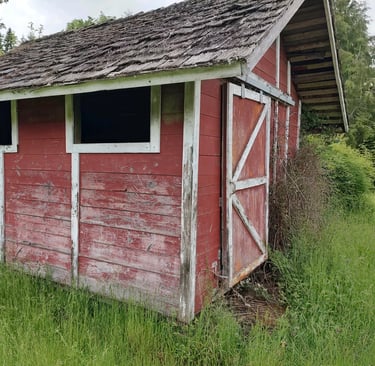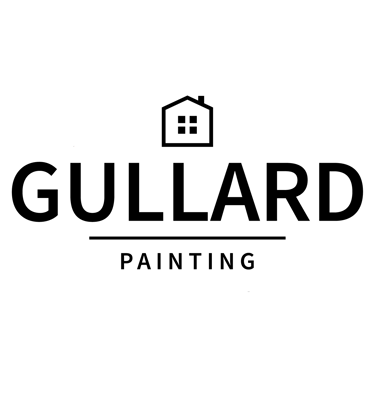How Weather Impacts Exterior Paint (PNW Edition)
Learn how Pacific Northwest weather affects your exterior paint and what you can do to extend the life of your paint job in Lewis County, WA.
EXTERIOR PAINTINGSEASONAL PAINTINGLEWIS COUNTY, WA


How Weather Impacts Exterior Paint (PNW Edition)
☔ Why the Elements Matter More Than You Think
When it comes to exterior painting in the Pacific Northwest—especially here in Lewis County, Centralia, and Chehalis—weather isn’t just a scheduling issue. It’s one of the most important factors affecting how your paint performs, how long it lasts, and how your home holds up over time.
In this post, we’re breaking down exactly how rain, humidity, temperature, and sun exposure impact exterior paint—and what you can do to make sure your next paint job lasts as long as possible.
1️⃣ Rain & Moisture: The PNW’s Biggest Challenge
Living in the PNW means dealing with a lot of moisture. Rain, mist, fog, and dew can wreak havoc on your exterior if the wrong paint—or the wrong timing—is used.
✔ Moisture Penetration – Constant dampness can seep into wood, causing bubbling, peeling, and mold if your paint isn’t sealed properly.
✔ Dry Time is Critical – If paint doesn’t dry fast enough, it can trap moisture underneath, leading to failure.
💡 Pro Tip: At Gullard Painting, we use Rodda Paint’s CoverCoat XL and Protector XL—formulated specifically for the Pacific Northwest. These paints are designed to cure properly in the cooler, wetter conditions we experience in early spring and late fall, reducing the risk of moisture-related failure.
2️⃣ Temperature Swings: Too Hot, Too Cold, or Just Right?
Paint reacts to temperature. If it’s too cold or too hot during application, your finish might not cure correctly—or worse, not stick at all.
✔ Below 38°F? Don’t paint. Even though Rodda’s paints can cure in lower temps, the surface must still be dry and conditions stable.
✔ Above 85°F? Proceed with caution. High heat can dry paint too quickly, leading to visible brush marks and uneven coverage.
🎯 Ideal painting season? Late spring through summer—when temperatures are stable, humidity is low, and we get the best drying conditions.
3️⃣ UV Exposure: The South Side Always Suffers
We may not be known for our sunshine, but UV rays still play a big role in paint wear—especially on the south-facing side of homes, which tends to get the most sun exposure throughout the year.
✔ Fading & Discoloration – Darker colors fade faster under UV, often leaving uneven, patchy finishes.
✔ Chalking – Over time, UV breaks down paint binders, creating a chalky residue on the surface.
✔ Cracking – Prolonged sun exposure can cause drying and cracking, especially if the substrate beneath isn’t primed properly.
💡 Pro Tip: When clients request bold or dark colors for exteriors, we always let them know those shades will likely fade faster. Choosing fade-resistant formulas—or placing deeper tones on less exposed sides—can help offset this issue.
4️⃣ Wind, Debris & Seasonal Stress
Exterior paint jobs also take a beating from wind and airborne debris. During spring and fall, wind-driven dirt, pollen, and leaves can embed in wet paint—or wear down cured surfaces over time.
✔ Windy days? Skip painting. Gusts kick up dust and make paint application inconsistent.
✔ Seasonal inspections matter. Cracks, peeling, and dirty surfaces can go unnoticed without regular checks.
🧰 PNW Maintenance Tip: Schedule an annual walk-around in early spring to look for signs of damage on your siding and trim. Early detection = longer-lasting paint!
5️⃣ How to Weatherproof Your Paint Job
✔ Use the right paint for your climate – Rodda’s CoverCoat and Protector lines are built for Lewis County conditions.
✔ Don’t skip prep – Spot prime raw wood, power wash dirty surfaces, and always allow time to dry fully before painting.
✔ Plan your project – Schedule painting during dry spells, and avoid days with extreme heat or cold.
✔ Maintain it – Touch up cracks and peeling early. Clean the siding gently once or twice a year to remove grime buildup.
🔍 Related Read: The Hidden Costs of Delaying Exterior Paint
🎯 The Bottom Line
In Western Washington, weather isn’t just a backdrop—it’s the main character in your paint job’s story. The good news? With the right prep, product, and painter, your home can stay protected and beautiful for 10–20 years.
At Gullard Painting, we take pride in understanding how the PNW climate affects your home—and in using the best strategies and products to keep it looking great year-round.
